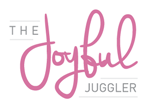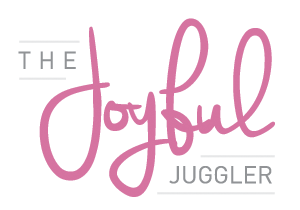“Breathing is the first act of life and the last. Our very life depends on it. Since we cannot live without breathing it is tragically deplorable to contemplate the millions and millions who have never mastered the art of correct breathing.” – Joseph Pilates, Return to Life Through Contrology
Bringing awareness to your breath and movement will help you to find a sense of balance and flexibility in both your body and your mind. Regardless of the type of exercise I am about to undertake, I always like to prepare myself by getting centred and I find the best way to do this is by taking a moment to focus on breathing.
In my Pilates classes, I like to start by getting my students to lay heavy on the mats, and encouraging them to find some stillness and relax and re-energise their bodies with deep breathing. I often see people flying through the door, frantically trying to get to their class on time after a hectic day at work or getting the kids sorted so they can get out of the house for their one hour of ‘me time’. Their breathing is often shallow and heavy and their bodies are full of tension, so I feel it’s important to find a sense of stillness before they start to work their bodies.
Before I go any further, I want you to take a second to monitor your breath. Don’t change anything, just continue to breathe the way you have been breathing. Where do you feel it? Is it up high in your chest or deep down into your tummy? Chances are you are sitting at a desk or on the couch in front of your computer right now, perhaps even a little slouched. The creator of the Pilates method, Joseph Pilates once said “Never slouch as doing so compresses the lungs, overcrowds other vital organs, rounds the back, and throws you off balance.” So sit up tall and take another breath.
Breathing oxygenates the blood and nourishes the body on a cellular level, and expels toxins in the form of carbon dioxide from the body. It is the most natural thing in the world, even if we are not breathing ‘correctly’ or ‘deeply’ we still breathe – that is until we walk into an exercise class. So many people tend to hold their breath whilst exercising, which is the absolute opposite to what we want to see. Breath is the engine that drives movement.
When we shallow breathe, or chest breathe, we are bringing minimal breath into the lungs and when we hold our breath we are raising our levels of carbon dioxide. While this is not desirable at any stage, when we exercise our working muscles need even more oxygen to keep contracting at a higher rate and if we not using our lung capacity to its fullest, it can lead to dizziness, headaches and fatigue during and post exercise.
You may have heard the term ‘VO2max’ which stands for maximal oxygen uptake and refers to the amount of oxygen your body is capable of utilising in one minute. It is a measure of your capacity for aerobic work and is used as a predictor of a person’s potential as an endurance athlete. Athletes train to increase their VO2max to improve their overall performance.
Regardless of whether you want to become an elite athlete or you simply want to get the most out of your Pilates session, increasing your level of maximum oxygen uptake is regarded as beneficial.
Practicing diaphragmatic breathing is a great way to train your respiratory muscles and teach you to utilise and increase your lung capacity. When breathing into the diaphragm the thoracic cavity expands, as its volume increases. Place one hand on your sternum and one directly opposite on your back and take a nice, long, deep breath and feel the increase in the anterior and posterior dimension. Then place a hand one each side of the lower rib cage and take another long, deep breath and feel your rib cage expand laterally. You want to think about filling up your hands with air in each of these positions.
There are many disciplines, both Eastern and Western, that place strong emphasis on the use of breath including yoga, tai chi, swimming, weight-lifting, karate etc. and different forms of exercise encourage different methods of breathing and for good reasons.
In Pilates the focus is on the lateral expansion of the rib cage as it facilitates and helps you to maintain an abdominal contraction while performing movements, as opposed to normal diaphragmatic breathing which demands relaxation of the abdominals on the inhale.
Meanwhile, Yoga Breathing or Pranayama, begins with deepening your breathing with the 3-part breath, and then moves into more advanced breathing exercises such as Kapalabhati and the Alternate Nostril Breath.
Both disciplines acknowledge breath as the vital life force use breathing to connect the mind and the body. While set breathing patterns may be enforced, it’s important to recognise that breathing should never become counter-productive to exercise by creating tension and confusion. Often students will say “When am I supposed to breath?” and despite there being specific breathing patterns for specific exercises for a specific reason, I’d prefer that people didn’t get too wrapped up in the breath pattern, so long as they breathe.
For the time being, keep it simple. Try try to remember to exhale on the hardest phase of an exercise, or the effort phase, and inhale on the easiest part of the exercise and if you are completing a complex movement and it all gets too much, please just remember to breathe.
Article originally published on www.aswa.net.au











